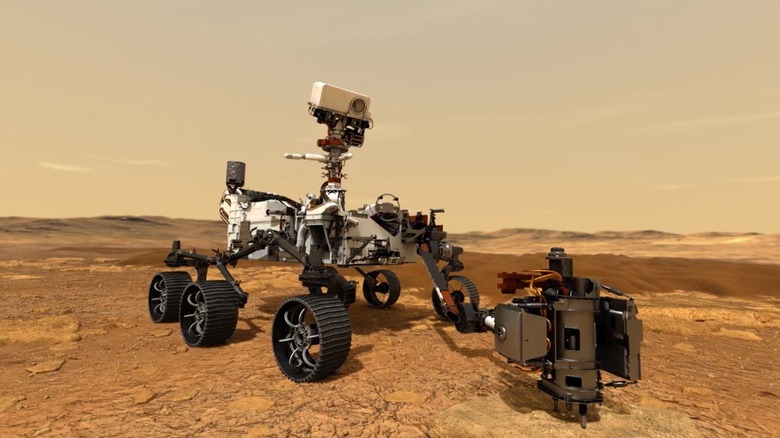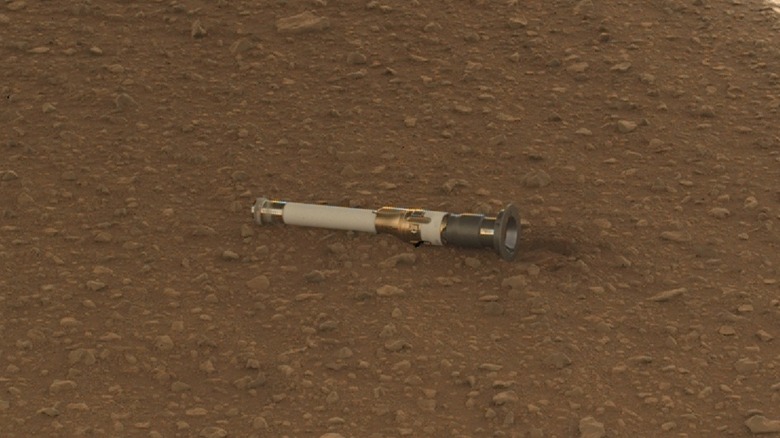This Isn't Mars Litter, It's The Start Of A Bold Plan By NASA
Lying on the rocky, dusty Martian landscape is a newly deposited titanium tube that somewhat resembles a lightsaber hilt. It would be fair for you to look at the image of this object shared by NASA and assume it's some sort of rover component that broke free or a piece of junk that made its way to the surface, but that's not the case: NASA dropped this tube on purpose, and it plans to add more to the pile over time.
NASA has been exploring Mars with its Perseverance rover for some time now, and it hasn't been shy when it comes to talking about its grander ambitions for the mission. Put simply, the space agency has tasked Perseverance with drilling into the Martian soil to collect small rock samples, which are then placed in a tube, sealed, and deposited for a future mission that'll bring them to Earth. In a milestone moment for this mission, Perseverance successfully collected and deposited its first sample tube.
NASA will ship small pieces of Mars to Earth
Perseverance rover dropped the titanium sample tube on the ground on December 21, 2022, according to an announcement from NASA. The tube is the first of a total of 10 that will be piled up in that spot, rounding out the initial step of the Mars Sample Return mission. NASA says the rover will collect the samples and deposit the tubes over the next couple of months, achieving a first for humanity: a deliberate "sample depot" full of material on a planet other than Earth.
If this news sounds familiar, that's because it is, sort of. Perseverance has already collected 17 samples from Mars, but they're all stored within the rover itself, according to NASA. The pile of sample tubes Perseverance is creating is considered a backup that'll be collected if, for whatever reason, the rover isn't able to hand over the samples it is storing to a lander that will arrive on Mars in the future.
NASA plans to use helicopters to pick up the backup sample tubes and take them to the lander, assuming that ends up being necessary. As outlandish as that may sound, it's also totally possible: the space agency has reported great success with its Ingenuity helicopter, having said in the past that it exceeded expectations. This is all leading up to what may be the most fascinating space mission thus far. The aforementioned lander will pack the samples into a capsule on a rocket, which will then launch into orbit around Mars. A different spacecraft will snatch the capsule from that rocket and then bring it safely back to Earth with all of the Mars samples — assuming nothing goes awry, of course.

